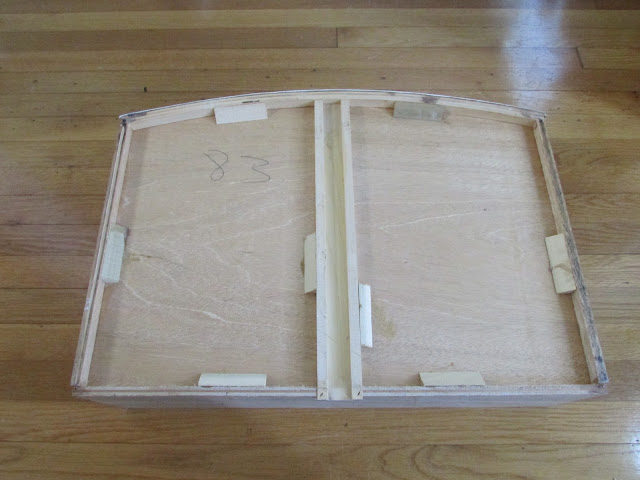In my last post, I showed you a desk/vanity that got the Old
White, refinished top treatment. What I
didn’t talk about was what made her such a great find on CL.
As I share snicks and snacks of my life, I guess coming from
a furniture family is something that would be relevant to this blog. My grandfather and father started a retail
furniture business in 1949. As I was growing up, I heard all about
Thomasville, Drexel, Henredon, Pennsylvania House, Broyhill and the High Point Furniture Market. I had the good fortune of working in the
store for 25 years . We were a medium to
high end retailer and I eventually became the buyer for all of our upholstery
and case products (wood furniture).
Since we regarded customer service as essential to our business model,
buying good quality furniture was key. I
learned the value of dust covers, dovetail joints, solid versus chip core, and
quality veneers versus yucky veneers.
Today, let’s talk today about dust covers , dovetail joints,
glue blocks and drawer glides. Wow! This is some thrilling stuff!
Dust covers are the horizontal dividers between
drawers. They are a sign of quality
because they add to the strength of the piece.
Additionally, they provide a service by reducing the amount of dust that
is passed from one drawer to another!
Thus the name “dust cover”!
Dovetail drawers are another sign of quality.
Have you ever pulled out a drawer only to have the front of the drawer
become disconnected from the body of the drawer? Rarely does that occur with dovetailing. The joints are interlocked in such a way that
it makes it very difficult for the front to become dislodged from the rest of
the drawer.
The dovetailing gives us a clue as to the age of the piece. The first picture posted of a dovetailed drawer
has hand carved joints as opposed to the second picture where the dovetailing
fits into the joints perfectly, as if done by machine! I’m not sure of the history of when the
manufacturers introduced the process of dovetailing by machine…perhaps somewhere in the 1930s - 1950s?
Nevertheless, dovetailed drawers are always a good sign of quality. So if you find a piece like Dixie (not known
as a high end manufacturer), check out the construction first before judging
the name brand.
As
the industry found more efficient ways to mass produce furniture, they found ways
to cut corners to lower their costs. In
this modern day, how often do you see solid woods, dovetailed drawers with dust
covers and wood on wood drawer guides?
Some of the very high end manufacturers still maintain that level of
quality, but the massed produced pieces have moved away from such quality. Here’s
a more modern piece with metal drawer glides and glued drawer fronts:
As you scour through thrift stores, answer Craigslist ads
or attend yard sales, I encourage you to pull out those drawers!
I hope this wasn’t too boring of a post. I try hard to find quality pieces to
rehab. It gives me such pleasure knowing
I have found a gem, given her new life and found her a home where she will be
loved and in turn will serve her new owner well.
Thanks for stopping by!
Robin






What a GREAT post! I've only recently started buying old pieces of furniture to restore, and knew about the dovetail joints on drawers, but I'd never heard of dust covers before, and was VERY interested to see the underside of the drawer with guides on. I shall certainly have a better idea of things to look out for now, so a very useful post, many thanks for sharing your knowledge.
ReplyDeleteJudi in the UK
Hi Judi!
DeleteI am so glad you found this information useful. I bet you find some really cool things over there in the UK! Keep in touch...and if you post some of the things you've done, please send me the link! I love to see what others are doing!
Robin